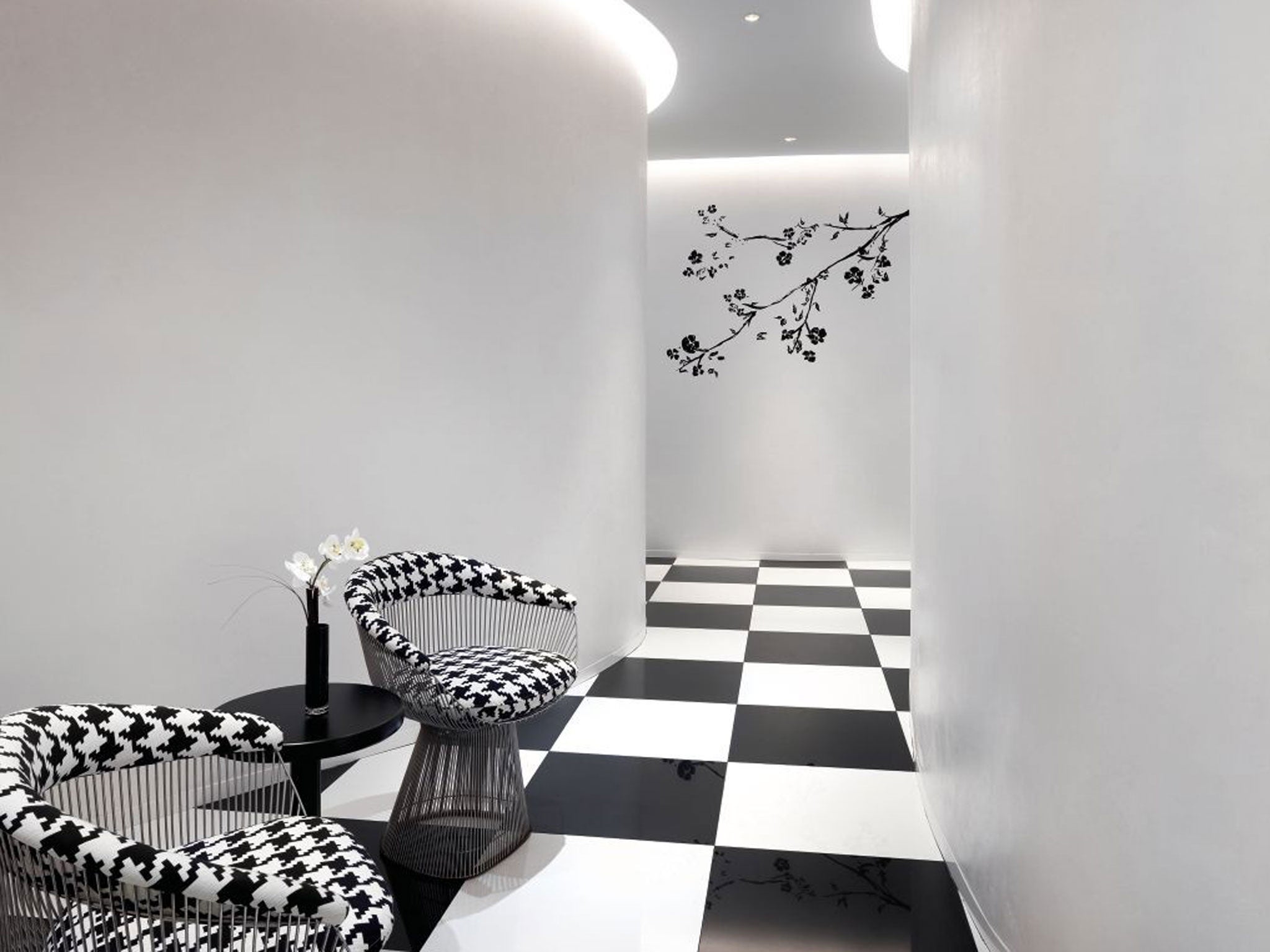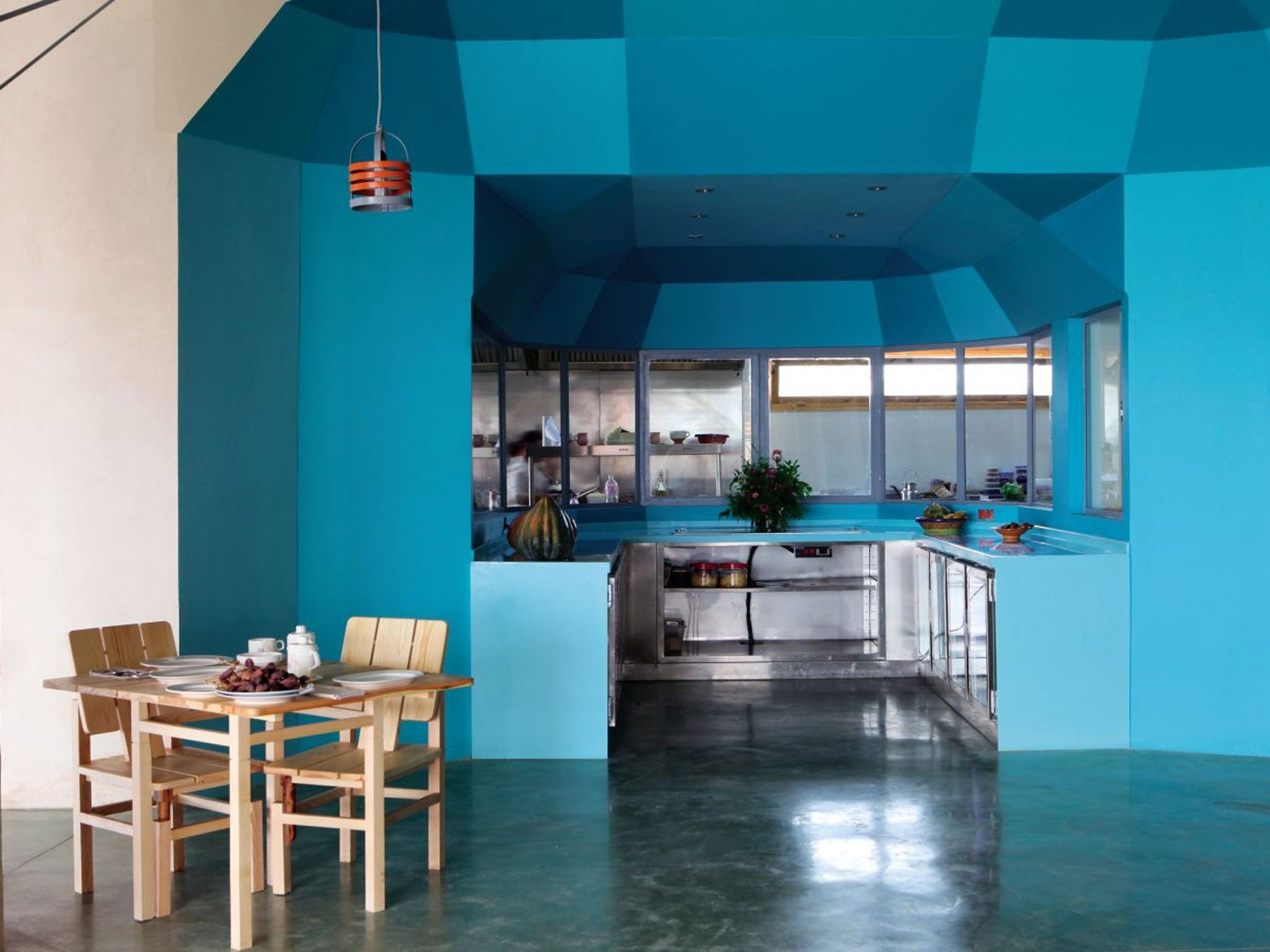Contemporary hotel design: Form, function and fab interiors
A new book reveals the design secrets that lie behind the world’s freshest, most innovative hotels. Refurb, new build or conversion, it’s what guests need that counts, as these extracts reveal

Your support helps us to tell the story
From reproductive rights to climate change to Big Tech, The Independent is on the ground when the story is developing. Whether it's investigating the financials of Elon Musk's pro-Trump PAC or producing our latest documentary, 'The A Word', which shines a light on the American women fighting for reproductive rights, we know how important it is to parse out the facts from the messaging.
At such a critical moment in US history, we need reporters on the ground. Your donation allows us to keep sending journalists to speak to both sides of the story.
The Independent is trusted by Americans across the entire political spectrum. And unlike many other quality news outlets, we choose not to lock Americans out of our reporting and analysis with paywalls. We believe quality journalism should be available to everyone, paid for by those who can afford it.
Your support makes all the difference.The refurbishment
The Club, Singapore (Ministry of Design)
The all-white façade of this century-old building establishes its credentials as a significant element in the stylish Club Street conservation area. It also gives a first taste of the rigorously restrained colour scheme that characterises the interior, with its white walls and ceilings, counterpointed by black furniture and fittings. The design draws on two historical sources: the city-state's colonial past and the experience of the Chinese economic immigrants who arrived at the beginning of the 20th century.
The references to the colonial heritage are ironically whimsical and are most obvious in the larger-than-life statue of Sir Thomas Stamford Bingley Raffles, who founded the city of Singapore at the beginning of the 19th century. Other colonial references are more subdued and found in witty detailing of furniture and artefacts.
References to the immigrants, most of whom came to earn money to support relatives back in China, are more poetic. Information graphics are inscribed on black silhouettes of black envelopes, which might contain messages of love as well as money, carried in the beaks of small black birds. Black drawings on white guest-room walls and artefacts, unique to each room, were created by Ministry of Design and realised by Wynlyn Tan, a local artist. These are reminiscent of traditional Chinese brush painting, evoking both the landscape and the culture. Their simple directness sits comfortably with the ingenious, modern and minimalist bespoke practical elements.
The plans of the two bedroom floors are identical but the room plans within them are unique and complex, generated in response to the angles of the existing building shell. Curved and thickened sections of wall relieve the angularity of corridors and soften some potentially awkward junctions.
In the bar, which is on the top floor and surrounded by a roof terrace and event space, the changing colours of LED lights that echo a traditional image of a flower represent the only divergence from the black-and-white palette.

The new build
Dar Hi, Tunisia (Matali Crasset)
Constructed in the Tunisian desert near the town of Nefta, this project interprets local vernacular building form and techniques to produce a resort hotel that is configured more like a walled village. The complex is promoted as a place of retreat rather than as a conventional hotel. When they enter the compound, guests remove their shoes and substitute local sandals. They are accommodated in eight two-storey ochre-coloured towers.
Those staying on the upper level have views across the surrounding desert through long, low windows. The position of beds within the rooms and the provision of thin lounging mattresses suggest that guests' primary concern should be to relax and reflect. Those on the lower level have similar outward views and are more involved with the communal terrace and pool, but these are tranquil places.
The underpinning principle – that time and routine are of very little importance – is reinforced by the catering provision. Local farmers grow the food and local cooks prepare it according to local recipes and may be observed doing so in the kitchen. While there is a dedicated restaurant area, guests may carry food where they wish and arrange tables as they please.
While some of the exterior's solidity is transferred into the faceted structures that divide up the shared indoor spaces, the bedrooms are more simply constructed. Individual pieces and their assembly methods are easily comprehensible but odd details – the small table cantilevered off a bed frame and the shelf that sits incongruously on top of a bedhead – suggest an artisanal ad hoc ingenuity. Despite a distinctive but limited palette of local materials, there are enough variations on basic furniture forms to dispel any impression of a corporate style. Decorative elements are simple variations on motifs that resonate easily for tourists and there are enough apparently random incidents to obscure evidence of a controlling hand.
The conversion
Nobis Stockholm, Sweden (Claesson Koivisto Rune)
This project, designed primarily for business travellers, deliberately avoids both the repetitive expression of corporate identity and the overblown gesture asserting the bijou and the boutique. Its designers, who describe business travel as an imposition rather than a pleasure, wanted the interiors to be particular but not strident. This contemporary reinterpretation of the ambiance of a traditional grand hotel eschews gilt, velvet and deep-piled carpets, offering in their place subtly diverse and complementary details.
The existing shell – two buildings with two distinctive elevations on a major city square – provided generous floor-to-ceiling heights and internal courtyards that maximised the number of bedrooms on each of the upper floors. Few changes were necessary to the fabric of the building, other than the removal of timber floors, which were later additions, to reclaim the full height of the courtyards, and the making of connections between the entrance, the lobby, the bar and the lounge to ease the flow of visitors around the building.
The colour scheme and lighting are warm and subdued throughout, inspired by the softer light of the Scandinavian winter; the palette is described as "Scandinavian Dark Blond". They have created patterns, frequently derived from their own technical drawings, that are primarily monochromatic and undetectable from a distance. In all they produced 20 original textile, furniture and lighting pieces, and another 70 that are variations on some of their earlier pieces.
In both bedrooms and communal spaces they aimed to make interiors like those in a private home, assembled over time. They have selected from the work of a range of designers and manufacturers to avoid any hint of corporate branding. They rejected, however, the idea that all bedrooms should be distinctly different. They argue that the regular business traveller has a well-defined set of needs and preferences and that all rooms should meet these with a minimum of fuss; minor variations in the artefacts that dress the bare functional bones are enough to give a sense of the particularities of a home.
Detail in Contemporary Hotel Design by Drew Plunkett and Olga Reid is published by Laurence King, £40 (laurenceking.com).
Join our commenting forum
Join thought-provoking conversations, follow other Independent readers and see their replies
Comments